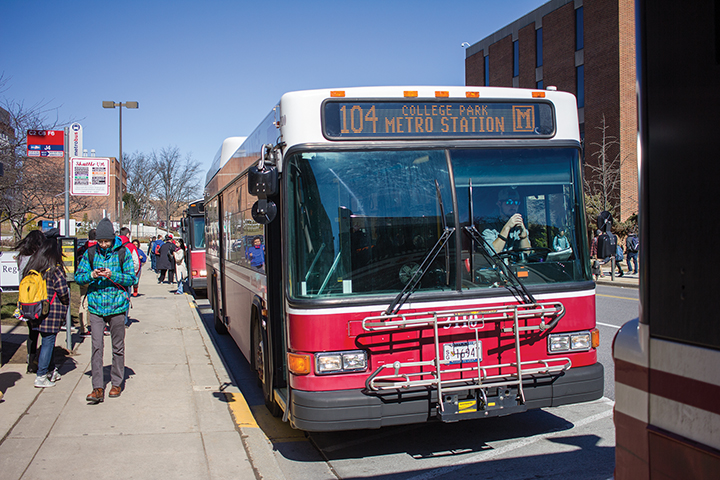The SGA voted Wednesday to request DOTS publish open transit data for publicly accessible Shuttle-UM bus routes, making it easier for users to plan trips in advance.
Student Government Association Off-Campus Neighboring representative Lily Kilduff pitched the idea to the SGA after a concerned student came to her and said the NextBus application, which provides real-time arrival information for Shuttle-UM buses, was difficult to navigate. After talking with her constituents, the junior sociology major, learned many students who are new to the campus have trouble understanding the app, she said.
The request calls for DOTS to allow for students to plan trips from one point to another using real-time transit data for Shuttle-UM buses, similar to apps such as Google Maps. It could alter the Nextbus app or lead to the creation of a new app.
When Kilduff transferred to the University of Maryland after her sophomore year, she experienced an “adjustment period” with NextBus.
[Read more: UMD DOTS is upgrading its Shuttle-UM technology in 2017 so riders never miss a stop again]
“While it would definitely help out people newer to campus, it definitely affects the whole student body,” Kilduff said. “[For a student] who has an internship and is trying to coordinate with the Metro [to] the student who takes more than just one bus and wants to plan those out.”
Kilduff tabled the resolution on March 15 after requesting more time to work with the Department of Transportation Services on the legislation. SGA Vice President of Student Affairs A.J. Pruitt emailed DOTS Executive Director David Allen on April 4 but did not receive a response.
As a result, Kilduff decided to bring the bill to the legislature for a vote.
“The system is not ideal for a multitude of reasons,” Kilduff said. “You can’t plan trips on NextBus like you would on Google Maps.”
Lu-Hua Hung, a senior finance and marketing major, said the NextBus app is often inaccurate. A new trip-planning application would benefit students who want to prepare in advance to travel to the campus for an exam, she said.
“The online bus schedule on the DOTS website is more correct than NextBus, so I rely on that,” Hung said.
The SGA wants DOTS to publish open transit information in General Transit Feed Specification format, which shows the bus schedule farther in advance and allows for trip planning, said Armand Scala, senior associate director of DOTS.
[Read more: University of Maryland will decrease parking spaces and increase fees by fall 2018]
The NextBus app currently provides information in XML format and shows the current location of buses and predicts arrival times, he said. But using the GTFS format would allow developers to pull information and let users know in advance when buses are running and when they will arrive
“We do have live open feeds of information; it is just not in the GTFS format at the moment,” Scala said.
The SGA requests for bus routes that do not require riders to present a student ID — such as shuttles to the College Park Metro station, The Courtyards, and the orange and green campus routes — to be included in the new feed to benefit the greater College Park community, Kilduff said.
The SGA considered the University of Maryland Climate Action Plan in writing the proposal, as the group wants to encourage efficient and sustainable transportation modes, Kilduff said. In the resolution, the SGA said the publication of such data in GTFS format would “confirm DOTS’ commitment to campus sustainability, public health and student quality of life.”
By publishing this data in a more user-friendly format, more students would be encouraged to use Shuttle-UM buses and lower the number of cars on the roads, Kilduff said.
Allen said while his organization would need to speak with the SGA to learn more about the request, publishing information in GTFS format is easy to do.
“It has just not been part of our currently planning, but it certainly can be if it is something campus would like to do through SGA,” Allen said. “We’re in, we just need to be notified.”
The SGA also wants to encourage members of the campus community to use their cars less frequently by making the bus system more user-friendly, advancing the University District Vision, which “recommends that ‘greater information to increase ridership’ be a key action that can ‘work to increase the availability, frequency and efficiency of bus transit in the city of bus transit in the city,'” as stated in the resolution.



